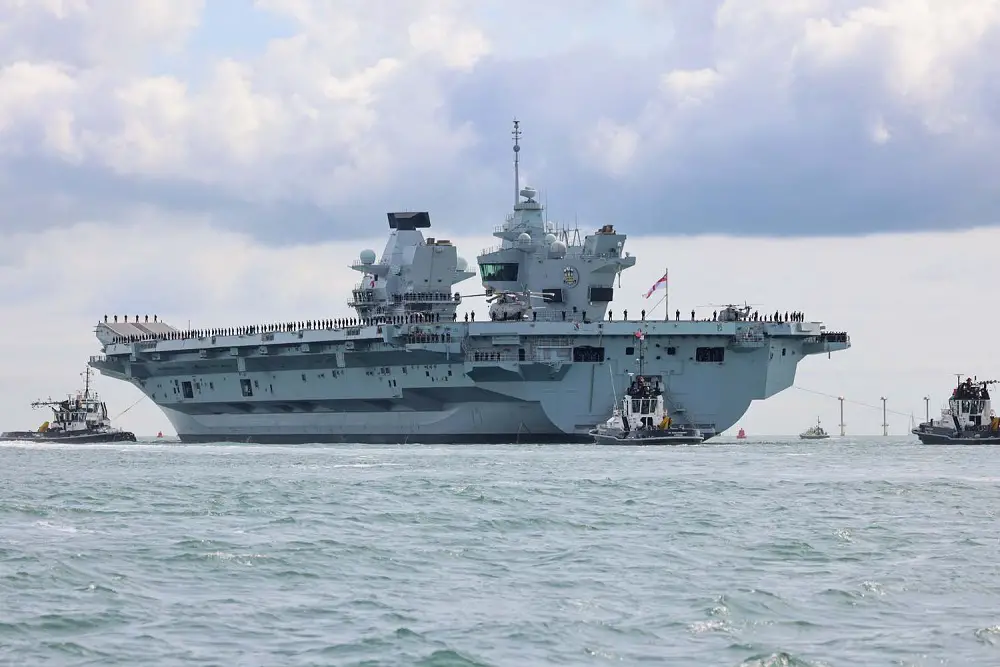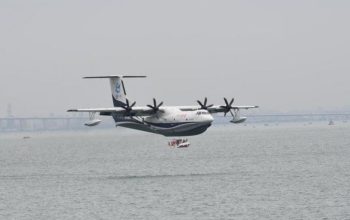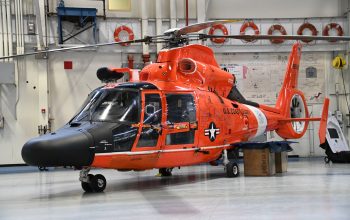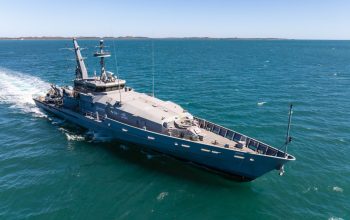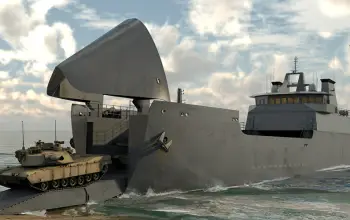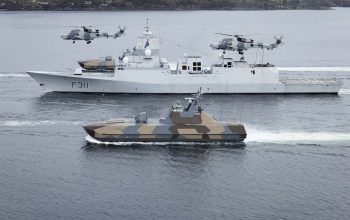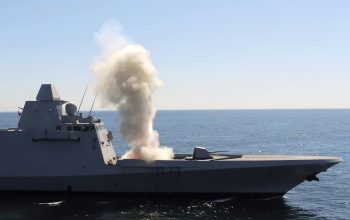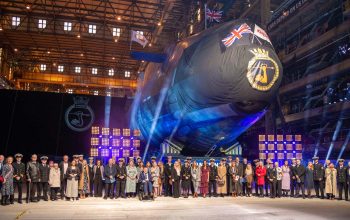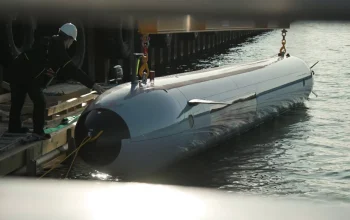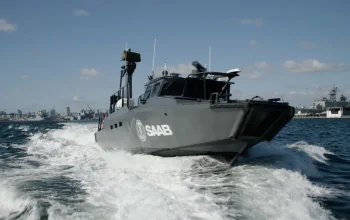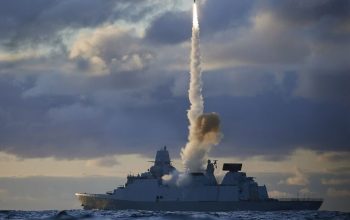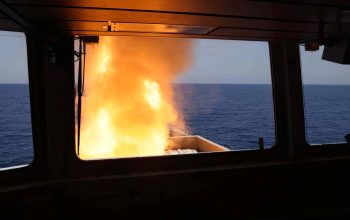Britain’s biggest warship today sailed for her autumn deployment – her longest yet, pushing the limits of aircraft carrier operations with drones, fifth-generation stealth fighters, tilt-rotors and helicopters. HMS Prince of Wales departs Portsmouth for the Eastern Seaboard of the United States to revolutionise the way the Royal Navy operates Carrier Strike Groups. Once in the Channel the ship’s company will conduct trials with UK-firm W Autonomous Systems to assess the feasibility of drones delivering supplies to Royal Navy vessels at sea – initially flying in up to 100kg of stores. Both the Royal Navy and its supporting flotilla from the Royal Fleet Auxiliary are experimenting with drone technology – saving launching large, expensive naval helicopters to perform the missions. Once in the United States, the ship will embark F-35B stealth fighters for the final phase of pushing the boundaries of the UK’s fifth-generation jets’ operating limits from the carrier. The F-35 has undergone extensive trials and assessment both in the US and UK operating from the flight decks of both Queen Elizabeth-class carriers and has deployed operationally. But five years after the Lightning jets made their debut on a Royal Navy aircraft carrier, there’s still more to learn about the state-of-the-art fighter – and more to be exploited.
By the time she returns home shortly before Christmas, the ship will have:
- operated advanced drone technologies, demonstrating the delivery of vital supplies without the need to use helicopters;
- landed and launched F-35 Lightning stealth fighters in more ways, more quickly and in the harshest of sea conditions to increase the strike carrier’s firepower;
- and increased the range and conditions in which the US Marine Corps’ impressive MV-22 Osprey tilt rotor aircraft can operate.
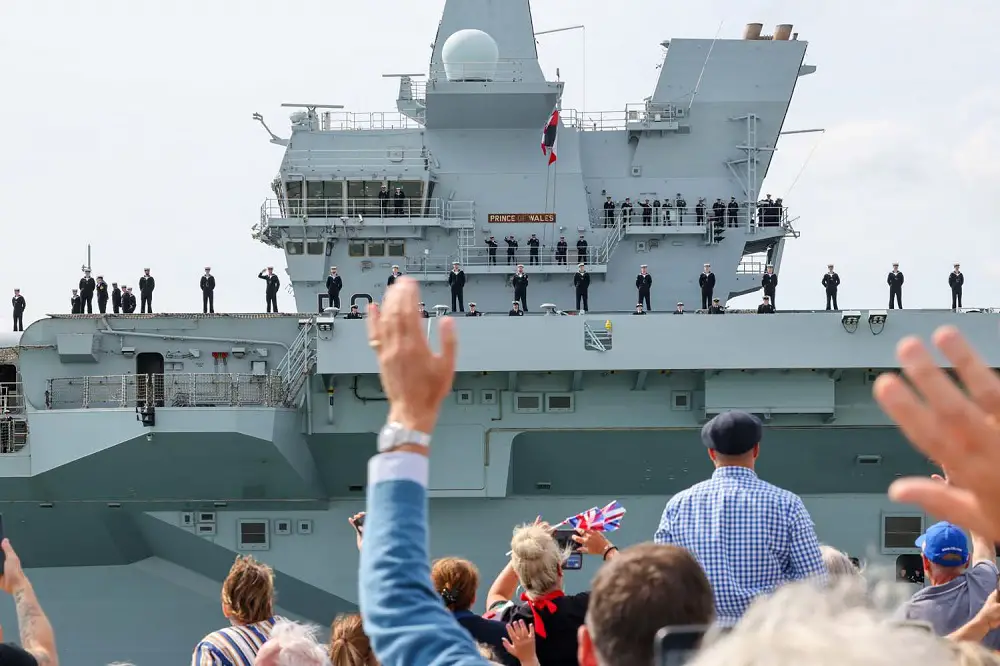
“We are all excited for the longest deployment of HMS Prince of Wales. Being the first to operate with this level of drones will be a huge achievement and keep us on the front foot as we prepare for the next major Carrier Strike Group deployment in 2025,” said her Commanding Officer Captain Richard Hewitt.
“My team are really excited to tackle the final phase of testing which will expand the F-35’s awesome capabilities even more – and to be the first to land and launch new types of drones on our deck. The deck team are ready and raring to go,” said Commander Martin Russell, in charge of HMS Prince of Wales’ air group and flight deck operations.
Pushing the boundaries will see more advanced take-off and landing techniques tested, allowing the F-35s to return to the carrier faster and heavier (i.e with more fuel and weapons aboard) which cuts the time between sorties, allowing the ship to launch more strike missions, faster. HMS Prince of Wales will also be looking to launch and land the Lightning jets in the heaviest sea states, proving that they can operate the jets in the harshest environments.Once the work with the F-35s is complete, focus will shift again to the next-generation of Short Take-Off and Landing drones currently under development. The Mojave drone can carry a 1,500lb payload of missiles, rockets or bombs and has been specifically designed to land and take-off from short runways, or flight decks. Trials are lined up to see whether the Mojave can land on the 901ft-long deck of the Prince of Wales. The carrier’s stint Stateside will conclude by expanding the US Marine Corps’ unique tilt-rotor MV-22 Ospreys operating limits. The Ospreys are used to transport troops and kit into battle. Expanding the ship’s operating limits for all of these aircraft over the deployment will allow even greater capacity for joint operations in the future, culminating in HMS Prince of Wales’ global deployment in 2025.


